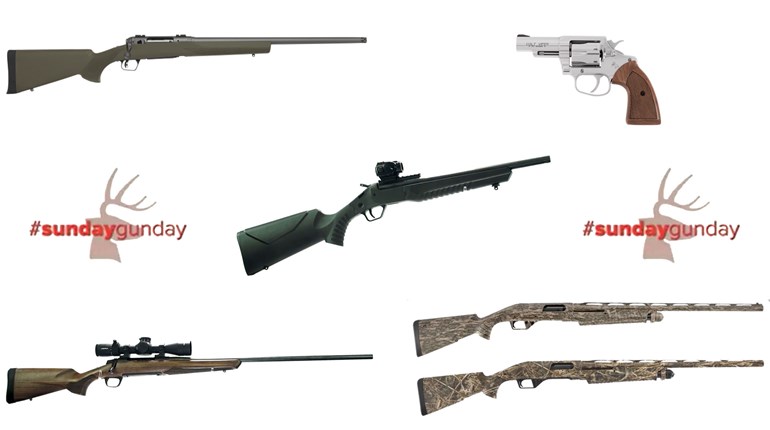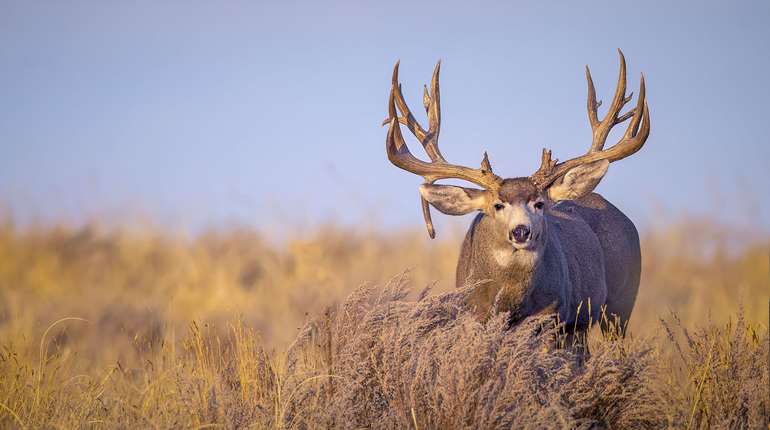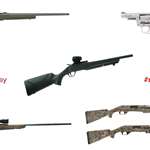Today on #SundayGunday, we fire the 7mm Backcountry, a 21st-century centerfire cartridge designed by Federal Ammunition for big-game hunting that delivers the news from a 20-inch barrel. To do this Federal ramps up pressure so the bullet exits the short barrel with muzzle velocity similar to any other 7mm magnum fired from a 24- or 26-inch barrel. It is approved by the Sporting Arms and Ammunition Manufacturers’ Institute with a maximum average pressure of 80,000 PSI, which is 15,000 PSI higher than most anything ever SAAMI-approved before. To contain the pressure, Federal uses not brass but a new steel alloy case.

At first blush it seems the cartridge was designed specifically for suppressor use but that’s not necessarily true. Federal merely recognized that many hunters today embrace suppressor use, so it designed a cartridge to produce from a short barrel.
The 7 BC looks at first glance like a member of the .30-06 family—like a .280 Remington, really. Case head diameter is .472 inch, a tick larger than the 06, indicating it fits standard bolt faces. Also, this means magazine capacity may be increased over other magnum-like cartridges in its class. Case length is 2.41 inches, a tad shorter than the .280. Maximum cartridge overall length is 3.34 inches, same as the 06, however, the 7 BC’s neck is shorter.

Its ballistics center around a muzzle velocity of roughly 3000 fps pushing trendy, heavy-for-caliber 7mm bullets with a twist rate of 1:8 inches. The 170-grain Terminal Ascent bullet, the only one we have test-fired so far, is one of five loads being released by Federal. Others include: a 155-grain Terminal Ascent; a 168-grain Barnes LRX; a 175-grain Fusion Tipped; and a 195-grain Berger Elite Hunter. That’s a lot of flexibility.
Its case is made from a patented steel alloy Federal discovered in use in other industrial categories. It’s called Peak Alloy (a trade name), and as a cartridge case it absolves the rifle of containing all that pressure without cracking or stretching. The one-piece case is ductile enough to seal the chamber to prevent gas from escaping into the action, and it’s nickel plated.
Like the 28 Nosler and Hornady 7mm PRC, the 7 BC is built to take advantage of today’s high-ballistic coefficient bullets to flatten downrange trajectory, which is especially beneficial to hunters.

For comparison, the 7 BC with a 170-grain Terminal Ascent carries a G7 BC of .325. It produced in our tests with an 18-inch barrel an average muzzle velocity of 2941 fps. At 400 yards velocity is 2528 fps, and energy is 2,413 ft.-lbs. Drop at 400 yards is 22.87 inches. The 28 Nosler loaded with a 175-grain AccuBond Long Range is rated at 2975 fps at the muzzle. At 400 yards velocity is 2561 fps, energy is 2,548 ft.-lbs. and drop is 22.24 inches. The Hornady 7 PRC loaded with a 175-grain ELD-X carries a muzzle velocity of 3000 fps. At 400 yards velocity is 2608 fps, energy is 2,643 ft.-lbs. and drop is 21.54 inches. True, downrange energy for the Nosler and Hornady loads is greater, but remember the 7 BC produces its numbers with a 20-inch barrel.
The propellant produces a different pressure curve than other powders, which helps reduce the recoil impulse amid 80,000 PSI. The kick of a 7 BC from a 20-inch barrel is no different than that from a 7mm Rem. Mag. or .300 Win. Mag. with a 26-inch barrel. Of course shortening a barrel too much will cause a bullet to exit with so much pressure behind it groups become too dispersed, but not so with the Federal 7 BC. Our initial range results produced groups averaging .75 inches at 100 yards.
All this makes the prospect of a practical backcountry hunting rig intriguing. Imagine heading into the wild with a bolt-action rifle with a 16-inch barrel and a folding stock that measures maybe 24 inches when stowed in a pack. In the field, a hunter could pull out the gun, unfold the stock, unfold the bipod, screw on the suppressor then settle in behind the trigger, knowing full well he is not handicapped at 500 yards. That’s pretty cool.
To learn more about the 7mm Backcountry visit federalpremium.com, and for more #SundayGunday any day of the week, check out our playlist on YouTube, where all previous episodes are archived.























